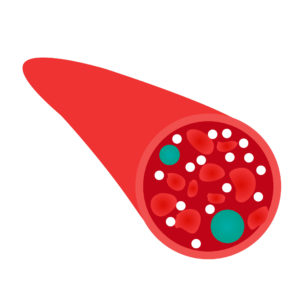 Peripheral artery disease, oftentimes shortened to PAD, is a condition that often affects your extremities, especially your feet and legs. The condition is categorized by pain, cramping or numbness in an area of your body due to plaque buildup in your arteries. This leads to blood-flow blockage, which means your muscles don’t get enough blood, and symptoms usually show up during exercise when these areas require more oxygenated blood.
Peripheral artery disease, oftentimes shortened to PAD, is a condition that often affects your extremities, especially your feet and legs. The condition is categorized by pain, cramping or numbness in an area of your body due to plaque buildup in your arteries. This leads to blood-flow blockage, which means your muscles don’t get enough blood, and symptoms usually show up during exercise when these areas require more oxygenated blood.
Today, we’re going to take a closer look at why PAD develops, and what can be done to treat it.
Causes and Symptoms of PAD
PAD is caused by poor circulation in your extremities, either due to blockage or arterial damage. Here’s a look at some of the causes of arterial blockage or damage:
- Smoking
- Obesity
- Diabetes
- High blood pressure
- High cholesterol
- Family history of PAD
- Old age
Common symptoms associated with peripheral artery disease in the lower extremities include muscle cramping in the thighs and calves, especially when walking or climbing stairs, leg pain, wounds or sores that won’t heal or heal very slowly, gangrene of the foot, a marked decrease in the temperature of your foot, poor nail growth and sexual dysfunction, especially in men with diabetes.
Diagnosing and Treating PAD
Like most health conditions, diagnosis begins with a physical exam performed by a specialist. Your doctor will examine the leg and check for weak pulse locations in your leg and foot. Your doctor will also likely perform what’s known as an ankle-brachial index (ABI), which is a painless exam that measures the blood pressure in your extremities. If the test shows that you have an abnormal ABI ratio, you may undergo more testing with the assistance of an ultrasound or CT/MR Angiography to examine the arteries in the problemed location.
Caught early enough, many patients experience successful conservative care treatment for their PAD. Common conservative treatments include physical activity, diet modifications, better diabetes management, giving up smoking and taking certain medications.
If those treatments fail to help alleviate the problem, surgery may be in the cards. This usually takes place in the form of a minimally invasive surgery, either with an angioplasty or stent placement. An angioplasty involves inserting a small balloon into the artery to expand the artery, which a stent involves placing a small wire mesh into the area to help hold the artery open. A bypass operation is also possible, but only for extreme blockages that cannot be treated with other operations.
For more information on PAD or how to care for yourself if you’ve been diagnosed with PAD, contact Dr. Silverman and his team today.